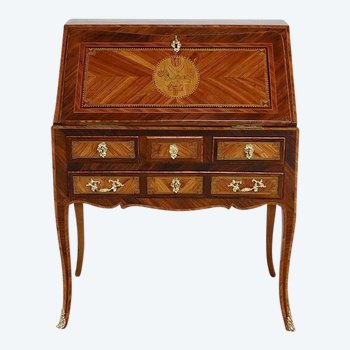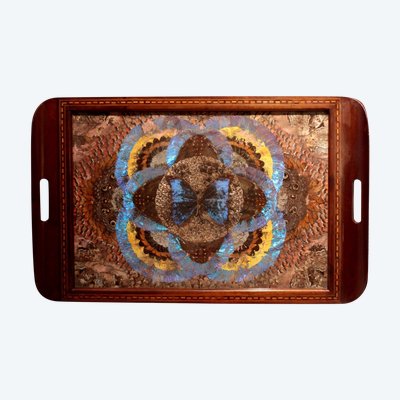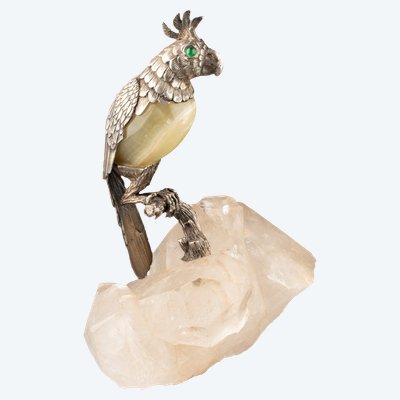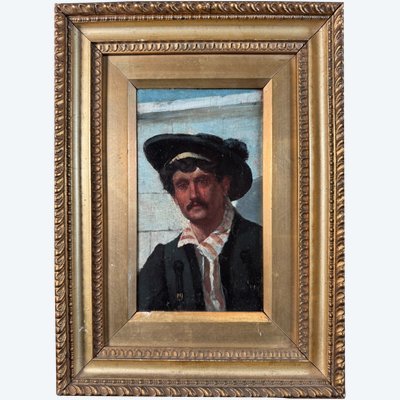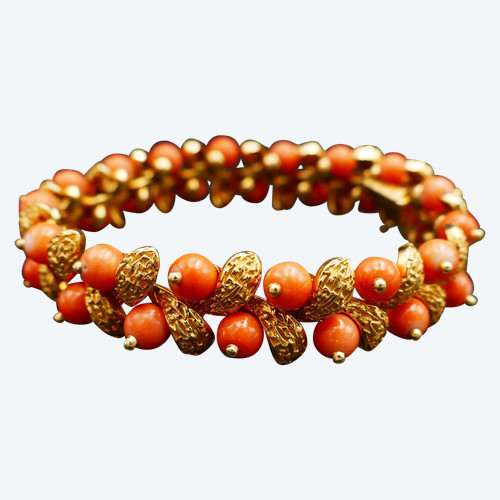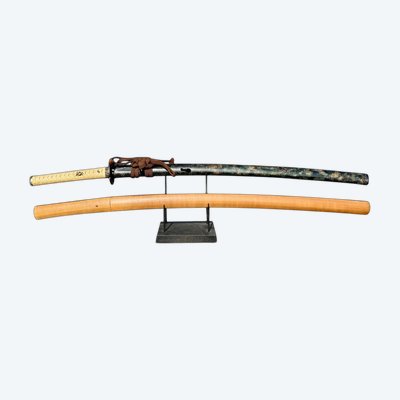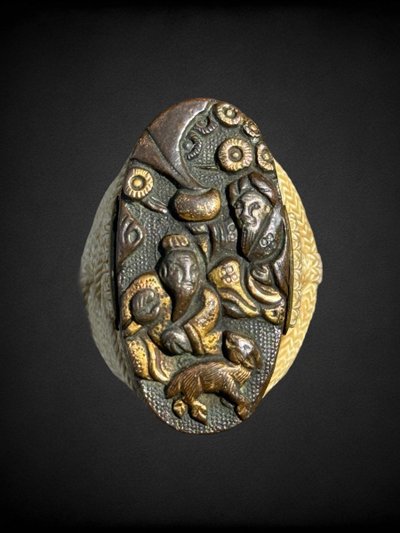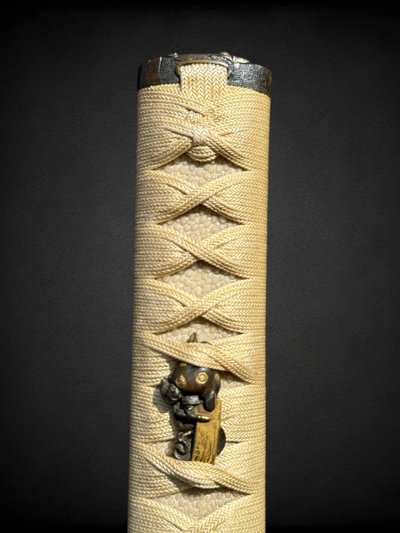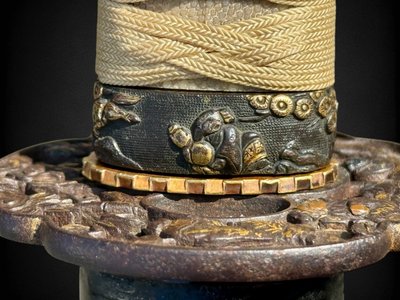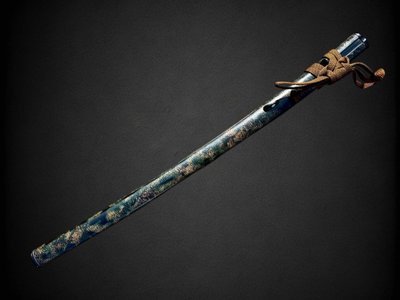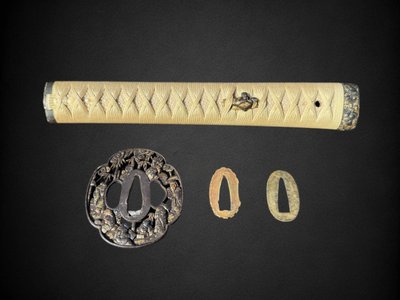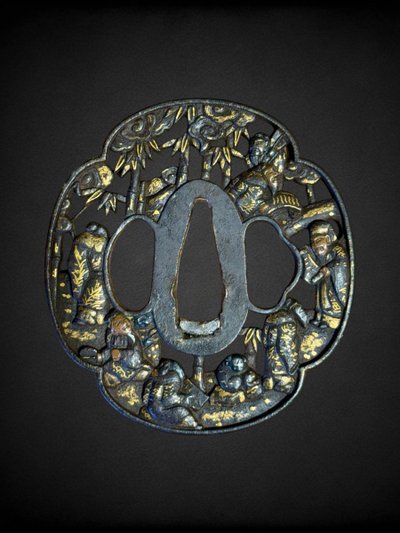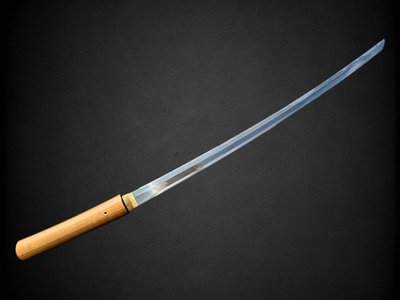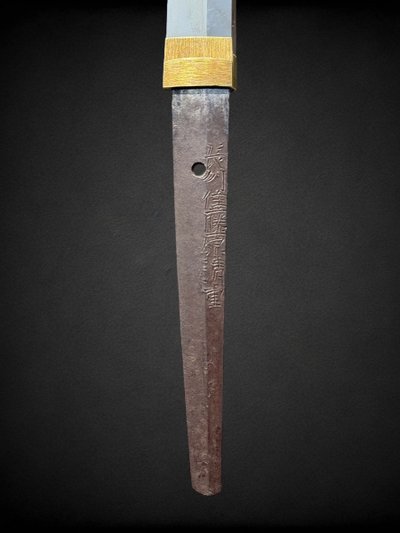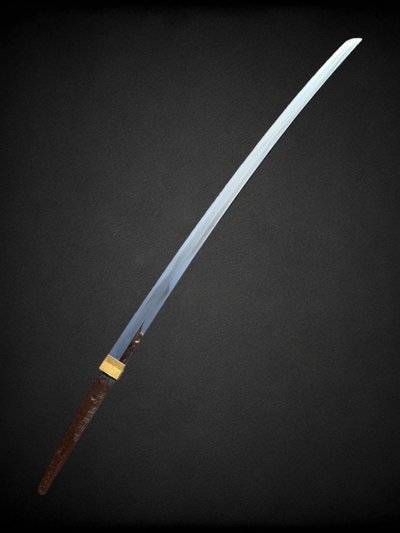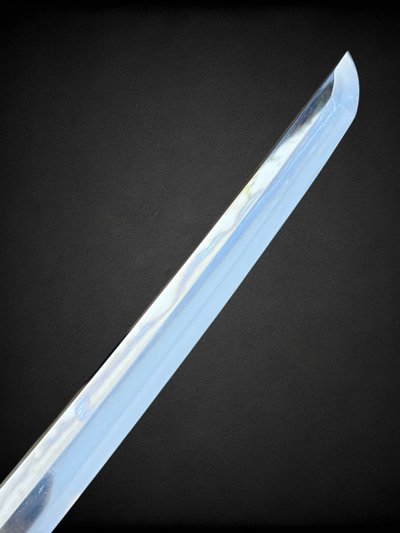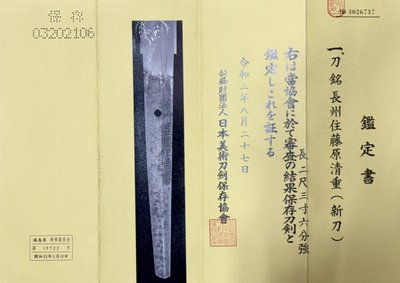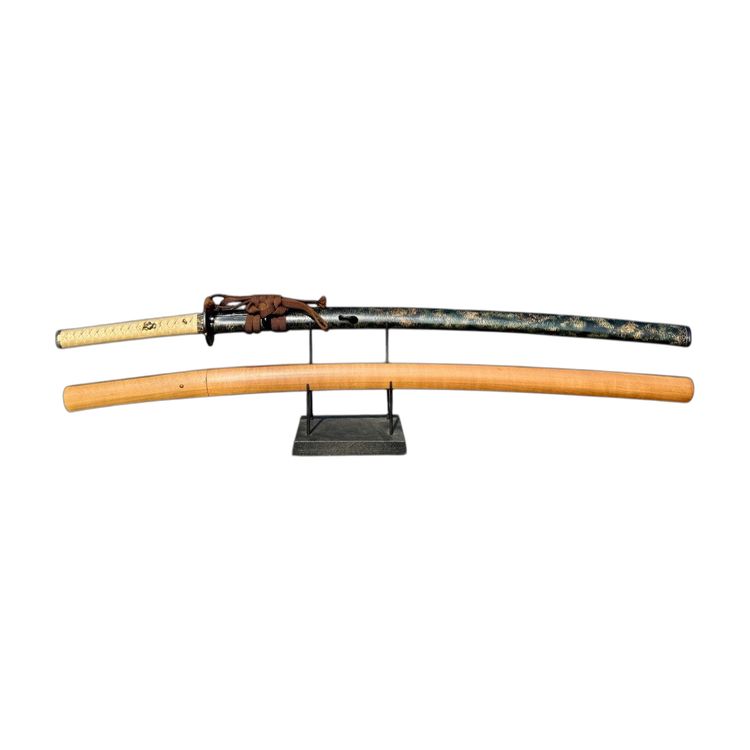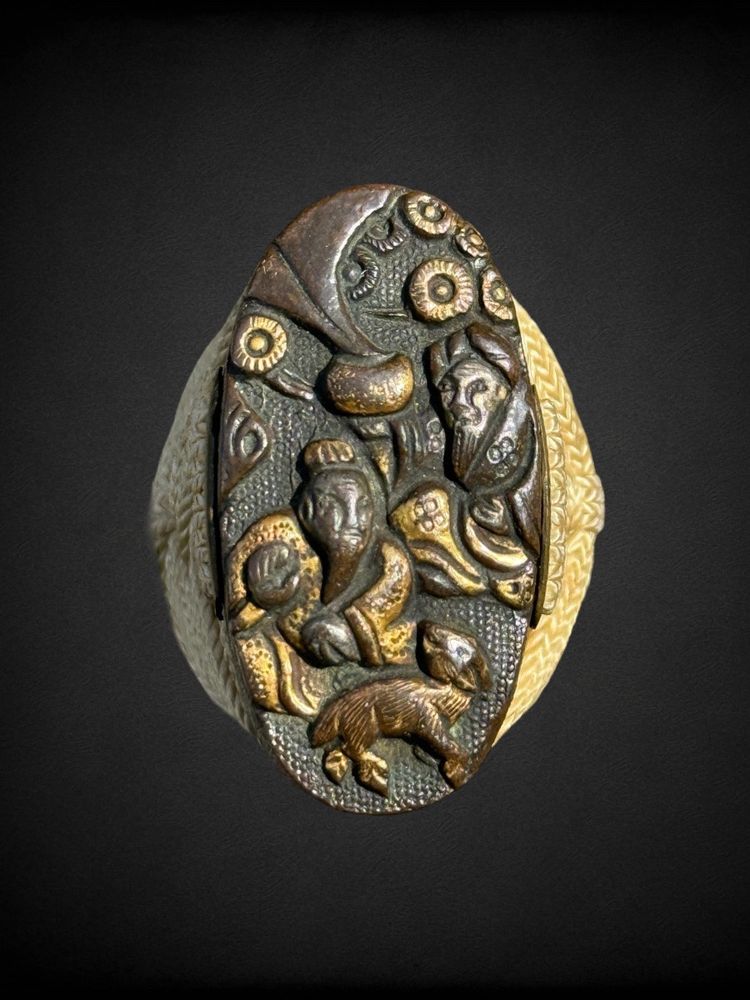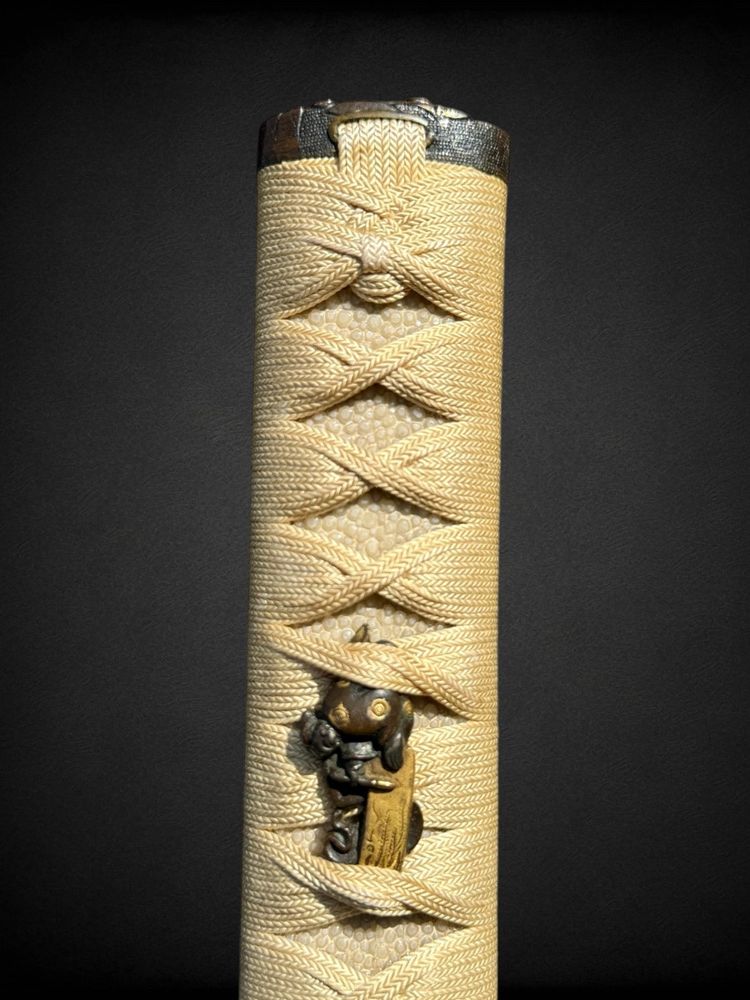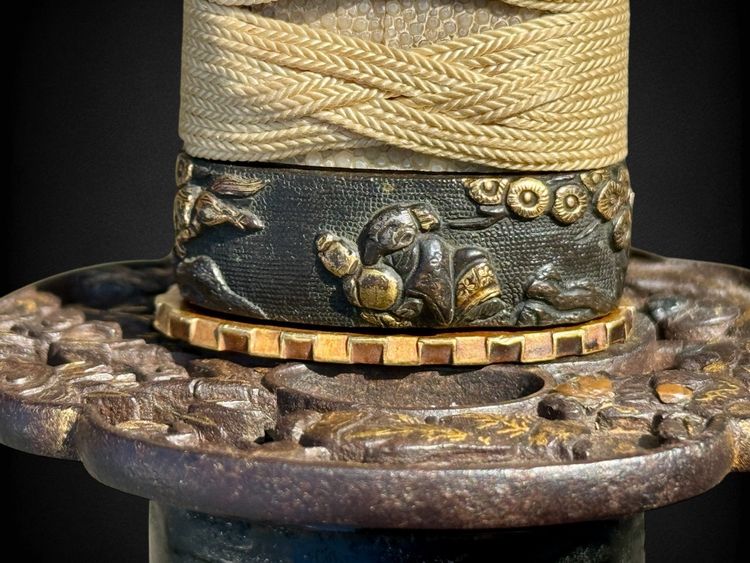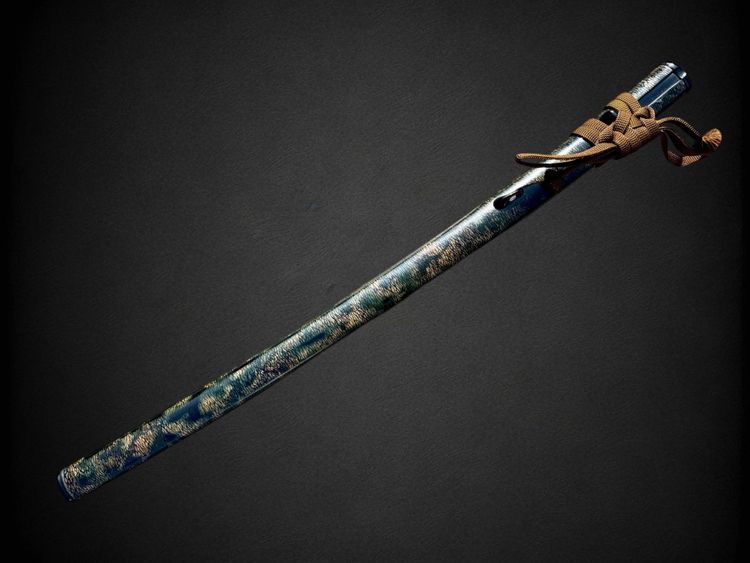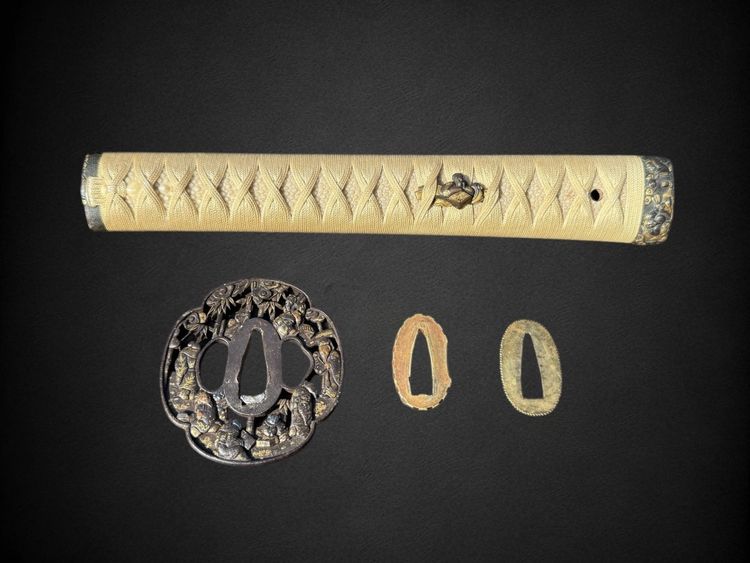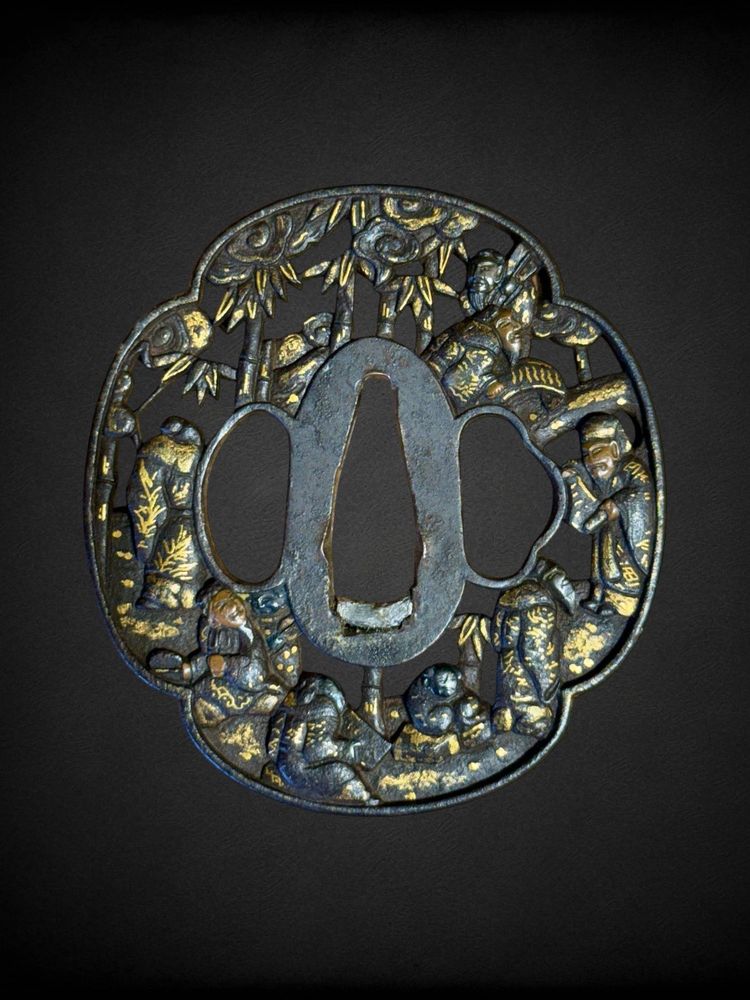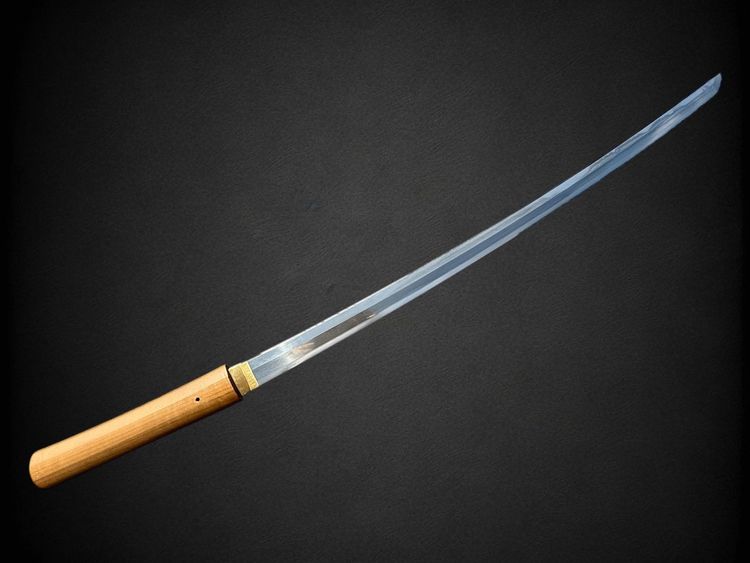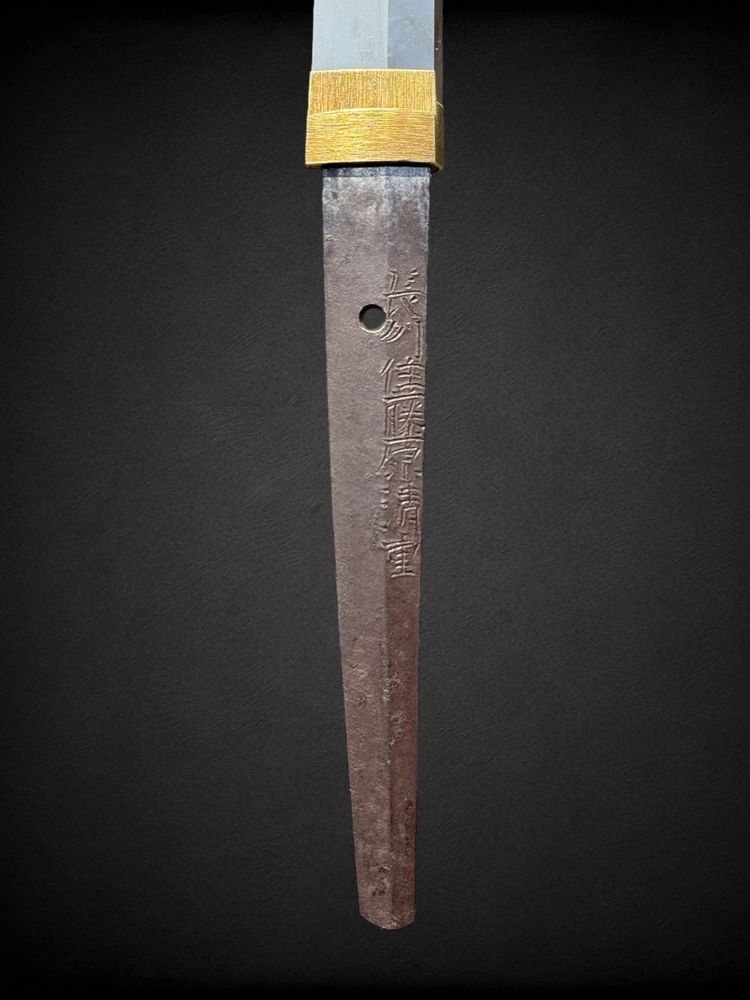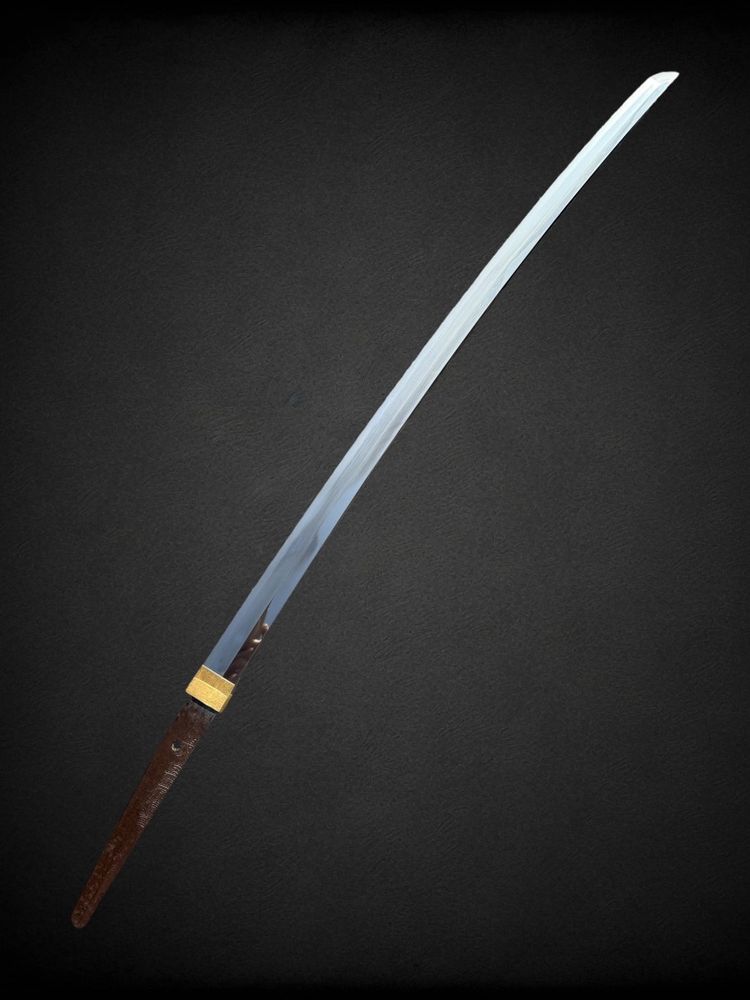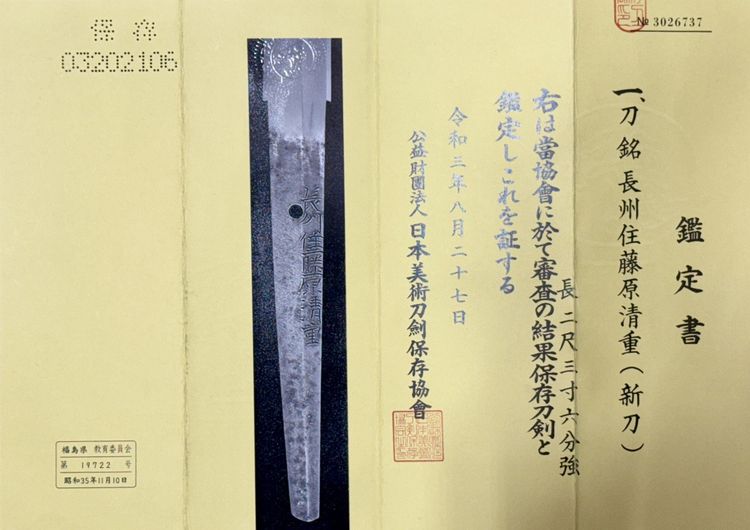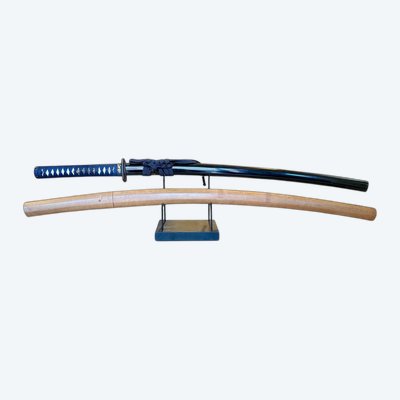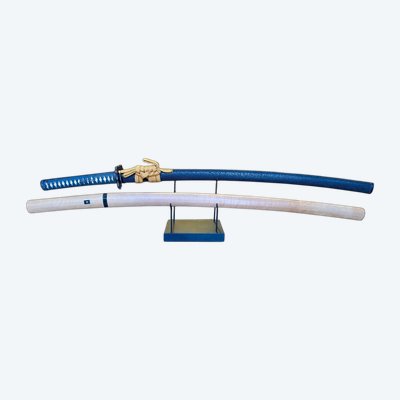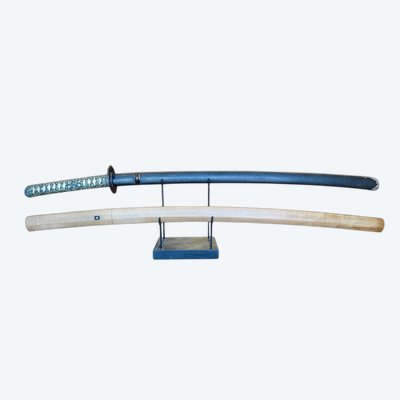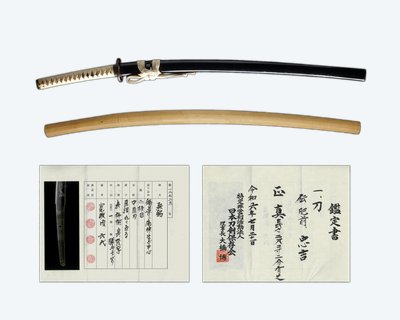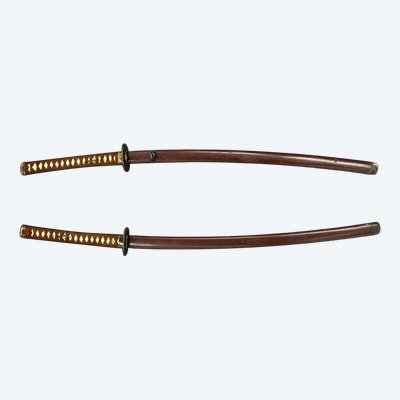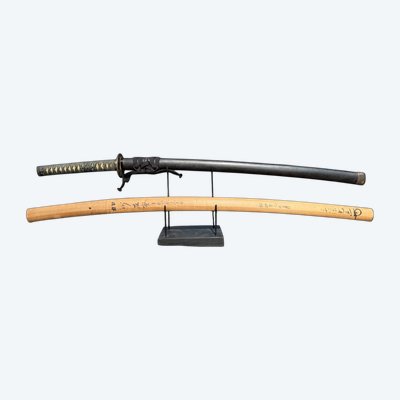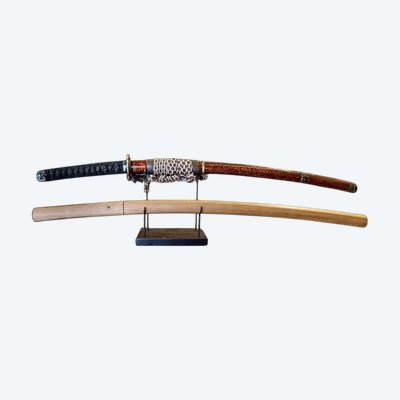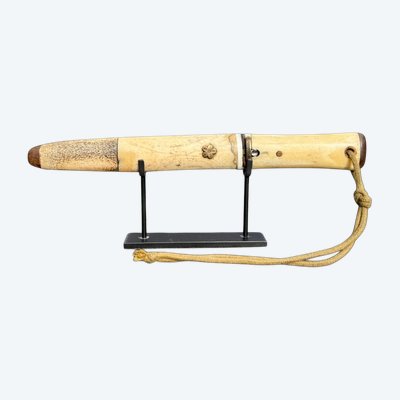This description has been translated and may not be completely accurate. Click here to see the original
JAPAN - Early Edo (17th century).
Samurai katana.
FUSHI - KASHIRA en suite in chased copper, partially gilded and silvered (wear) on a nanako background with the theme of eight Taoist hermits.
Wooden TSUKA covered with ray skin.
MENUKIS in chased and gilded copper depicting scholars, one practicing the art of calligraphy, the other music.
TSUBA mokko-gatta in wrought iron, openwork, chased and partly gilded (wear) featuring the seven sages in the bamboo grove.
SAYA in predominantly green lacquered wood, in very good condition.
HABAKI in gilded copper.
Straight blade, regular hamon, straight and well marked, the tang holed once, signed by Choshu Ju Fujiwara Kiyoshige(長州住藤原清重). Choshu is another name for the province of Nagato (now Yamaguchi Prefecture), and Choshu Ju means that he was residing in this region when he forged this blade. The maker's name, Kiyoshige, spanned generations in Choshu from the early to the late Edo period (late 16th to mid-19th century). According to NBTHK's assessment, this blade was forged by Kiyoshige, who was active in the early Edo period.
Sold with stand, silk carrying case and NBTHK certificate.
NBTHK, also known as Nihon Bijutsu Touken Hozon Kyokai (the Society for the Preservation of Japanese Art Swords), is one of the oldest Japanese sword evaluation organizations in modern Japan.
Dimensions: 7.5 x 105 x 7 cm.
Edge length: 71.6 cm.
Curvature: 1.5 cm.
Ref: CS5DYAB7GT

